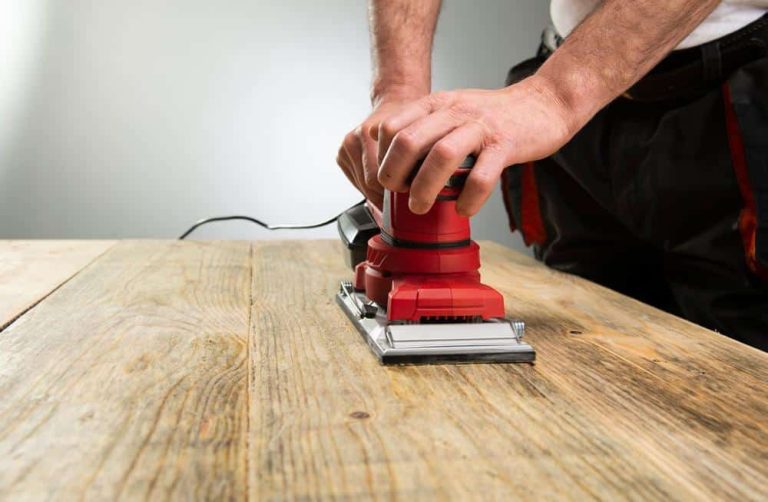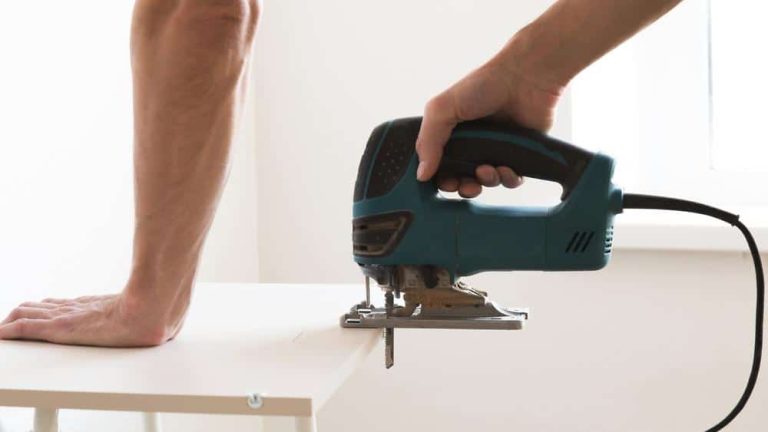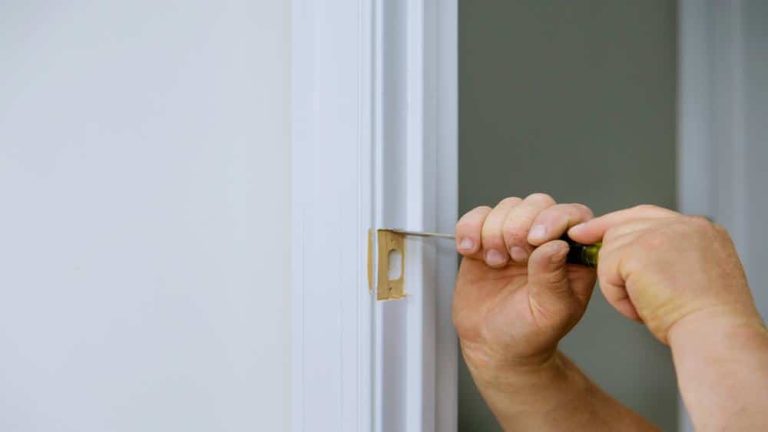If you’ve discovered chaetomium mold in your home, taking action immediately is essential. Chaetomium mold is a type of fungus that can cause significant damage to your property and pose health risks to you and your family. In this article, we’ll provide you with a comprehensive guide on how to get rid of chaetomium mold safely and effectively.

1. Introduction
Chaetomium mold is a type of fungus that can be found both indoors and outdoors. It is commonly found in damp environments such as basements, bathrooms, and kitchens. Chaetomium mold is known for its ability to grow on materials with high cellulose content, such as paper, cardboard, and drywall.
2. Understanding Chaetomium Mold
I. What is chaetomium mold?
Chaetomium mold is a type of fungus that can be found both indoors and outdoors. It is commonly found in damp environments such as basements, bathrooms, and kitchens. Chaetomium mold is known for its ability to grow on materials with high cellulose content, such as paper, cardboard, and drywall.
II. What does chaetomium mold look like?
Chaetomium mold is typically white or grey and has a cotton-like texture. It often grows in circular patterns and has a distinct musty odor. Unlike other types of mold, chaetomium mold requires a high level of moisture to develop. This means it is commonly found in damp areas or has experienced water damage.
III. What are the health risks associated with chaetomium mold?
The health risks associated with chaetomium mold can vary depending on the individual’s sensitivity to mold. Some people may experience allergic reactions, respiratory problems, and other health issues. In severe cases, exposure to chaetomium mold can lead to mycotoxicosis, a condition caused by ingesting or inhaling the mycotoxins produced by certain molds.
IV. What are the causes of chaetomium mold growth?
The causes of chaetomium mold growth are typically related to moisture. This can include leaks, high humidity levels, and poor ventilation. Any area prone to moisture buildup can be a potential breeding ground for chaetomium mold. It is essential to promptly address any moisture sources in your home to prevent chaetomium mold growth.
V. How does chaetomium mold spread?
Chaetomium mold can spread through the release of mold spores into the air. These spores can travel through the air and settle on other surfaces, potentially leading to new colonies of chaetomium mold. If left untreated, chaetomium mold can spread quickly, making it essential to promptly address any signs of mold growth.
VI. How can you prevent chaetomium mold growth?
Preventing chaetomium mold growth can be done by taking a few simple steps. First, it is vital to maintain a clean and dry environment in your home. This may include using a dehumidifier, fixing leaks promptly, and ensuring proper ventilation in areas prone to moisture buildup. Regular cleaning and disinfecting of surfaces can also help to prevent chaetomium mold growth.
In addition, promptly addressing any signs of water damage is vital. This may include repairing leaks, drying wet areas, and removing damaged materials. By taking these steps, you can help to prevent chaetomium mold growth and protect the health and safety of your family.
Overall, understanding chaetomium mold and its potential risks is essential for homeowners. By taking proactive steps to prevent chaetomium mold growth and promptly addressing any signs of mold growth, you can help ensure a safe and healthy environment in your home. Suppose you suspect that you have chaetomium mold in your home. In that case, seeking professional help to identify and eliminate the mold correctly is crucial.

3. What is Chaetomium Mold?
I. Where is chaetomium mold commonly found?
Chaetomium mold is commonly found in damp areas or has experienced water damage. This includes basements, bathrooms, kitchens, and other areas where moisture buildup can occur. Suppose you suspect that you may have chaetomium mold in your home. In that case, it is crucial to identify and address the problem promptly to prevent further damage and protect the health and safety of your family.
II. How can you identify chaetomium mold in your home?
Identifying chaetomium mold in your home can be challenging. It often grows in hidden areas, such as behind walls or under flooring. However, some signs to look out for may indicate the presence of chaetomium mold. These include:
a. Musty odor
Chaetomium mold has a distinct musty odor, often described as earthy or damp. If you notice a musty smell in your home, it may be a sign of mold growth.
b. Discoloration
Chaetomium mold is typically white or grey but can also appear brown or black. If you notice any discoloration on walls, ceilings, or other surfaces, it may be a sign of mold growth.
c. Water damage
Chaetomium mold requires moisture to grow, so any area that has experienced water damage is at risk for mold growth. If you have had any leaks or flooding in your home, it is vital to check for signs of mold growth.
d. Texture
Chaetomium mold has a cotton-like texture and often grows in circular patterns. If you notice any unusual textures on surfaces in your home, it may be a sign of mold growth.
III. What are the signs and symptoms of chaetomium mold exposure?
If you suspect you have chaetomium mold in your home, it is vital to address the problem promptly. This may include hiring a professional to identify and eliminate the mold. A professional mold inspector can visually inspect your home to identify any areas of mold growth. They may also use specialized equipment such as moisture meters or air sampling devices to detect hidden mold growth.
In addition to visual inspection, a professional mold inspector may also ask questions about your home and any previous water damage or mold issues. This can help them identify potential mould growth sources and develop an effective plan for eliminating the mold.
IV. When should you consider hiring a professional to identify chaetomium mold?
Suppose you have been exposed to chaetomium mold. In that case, you may experience a range of symptoms depending on your sensitivity to mold. Some common signs and symptoms of mold exposure include:
a. Respiratory problems
Mold exposure can cause respiratory issues such as coughing, wheezing, and difficulty breathing.
b. Allergic reactions
Some people may experience allergic reactions to mold, including sneezing, runny nose, and itchy eyes.
c. Skin irritation
Mold exposure can also cause skin irritation, such as rashes or hives.
d. Headaches
Mold exposure can lead to headaches, fatigue, and flu-like symptoms.
Suppose you experience these symptoms and suspect you may have been exposed to chaetomium mold. In that case, it is crucial to seek medical attention promptly.
In general, hiring a professional to identify and eliminate chaetomium mold in your home is recommended. This is especially important if you have experienced water damage or have a history of mold growth in your home. A professional mold inspector can help to ensure that the mold is adequately identified and eliminated, reducing the risk of further damage to your home and protecting the health and safety of your family.
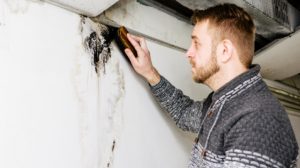
4. How to Remove Chaetomium Mold
Step I. Safety Precautions
Chaetomium mold can release spores that can cause health problems, so it’s essential to take safety precautions when removing it. You should wear protective gear such as gloves, goggles, and a face mask to avoid inhaling the spores. It’s also a good idea to wear a disposable suit to prevent mold spores from getting on your clothing. If you have any underlying respiratory conditions, leaving the cleanup to a professional is best.
To remove chaetomium mold, you’ll need a few tools and materials, including a HEPA-filtered vacuum, plastic sheeting, a spray bottle, a scrub brush, and a cleaning solution. You may also need a dehumidifier to reduce humidity levels in your home, as high humidity can contribute to mold growth.
Step II. Containment
Before removing chaetomium mold, you must contain the affected area to prevent the spores from spreading to other parts of your home. You can do this by covering doors and vents with plastic sheeting and sealing them with tape. You should also turn off your HVAC system to prevent the spores from spreading through the air.
Step III. Removal
To physically remove chaetomium mold, you can use a scrub brush and cleaning solution to clean the affected surfaces. It’s essential to be thorough and remove all visible mold, as even a small amount left behind can quickly grow and spread. You may also need to use a HEPA-filtered vacuum to remove loose spores.
You can use several different removal methods, including dry brushing, wet vacuuming, and damp wiping. The way you choose will depend on the extent of the mold growth and the surface it’s on. For example, dry brushing may be best for removing chaetomium mold from a hard, non-porous surface. At the same time, wet vacuuming may be better for removing it from the carpet.
If the mold growth is extensive, you may need to remove and replace affected materials such as drywall or carpet. A professional should do this to ensure that the mold is completely removed and doesn’t spread to other parts of your home during the removal process.
Step IV. Cleanup
After you’ve removed the chaetomium mold, it’s essential to clean up the affected area thoroughly. Use a damp cloth or mop to wipe down surfaces and remove any remaining spores. In sealed plastic bags, you should also dispose of any contaminated materials, such as carpets or drywall.
If you’re using a HEPA-filtered vacuum, empty it outside to prevent spores from returning to your home. Using an air purifier with a HEPA filter would be best to remove any remaining mold spores.
Step V. Prevention
To prevent chaetomium mold from returning, you must address the underlying causes of mold growth. This may involve fixing leaks or moisture issues, improving ventilation, and reducing humidity levels in your home. You should also regularly clean and maintain your HVAC system and use a dehumidifier if necessary.
It’s also a good idea to watch for signs of mold growth, such as musty odors or water stains. If you notice any signs of mold, address the issue immediately to prevent the decay from spreading and becoming more challenging to remove.
In conclusion, chaetomium mold can be a severe issue if left untreated. Still, you can safely and effectively remove it with the right tools and techniques. Remember to take safety precautions, contain the affected area, physically remove the mold, clean up thoroughly, and address the underlying causes to prevent the mold from returning. If you’re not comfortable removing the chaetomium mold.
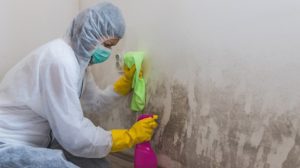
5. Hiring a Professional
I. When should you consider hiring a professional to remove chaetomium mold?
Hiring a professional may be necessary when removing chaetomium mold from your home. Here are some situations where it may be best to call in the experts:
a. Extensive Growth
If the mold growth covers an area greater than 10 square feet, it is best to call a professional. Removing the mold yourself may cause further contamination and spread the spores.
b. Health Concerns
If you or a family member have a pre-existing health condition that may be exacerbated by mold exposure, it is best to hire a professional to remove the mold. This includes individuals with respiratory issues, allergies, and weakened immune systems.
c. Structural Damage
If mold growth has caused significant damage to the structure of your home, it is best to hire a professional. Attempting to remove the mold yourself may cause further damage and compromise the integrity of your home.
III. What qualifications should you look for in a professional mold remediation company?
When choosing a professional mold remediation company, there are a few qualifications to look for. First and foremost, make sure the company is licensed and insured. This protects you in case of any accidents or damage during the remediation process. Additionally, look for a company with experience in removing chaetomium mold specifically, as this can be more challenging to remove than other types of mold.
IV. What questions should you ask a professional mold remediation company before hiring them?
You can verify the credentials of a professional mold remediation company by checking their license and insurance status with your state’s licensing board. Additionally, look for reviews and testimonials from past customers to gauge their expertise and customer service.
- Before hiring a professional mold remediation company, ask them the following questions:
- What is your experience with removing chaetomium mold specifically?
- What steps will you take to ensure the mold is completely removed and won’t return?
- What precautions will you take to protect my home and belongings during remediation?
- What is your pricing structure, and what is included in the cost?
- Can you provide references or testimonials from past customers?
By asking these questions and doing your research, you can ensure that you hire a reputable and qualified professional to remove chaetomium mold from your home.
6. FAQs
I. What is the difference between chaetomium mold and other types of mold?
Chaetomium mold is a type of fungus that is often found in water-damaged buildings. Unlike other types of mold, chaetomium mold has a cottony texture and a distinctive musty smell. It is typically found in areas with high humidity, such as basements, bathrooms, and kitchens.
II. How long does it take for chaetomium mold to grow?
The growth rate of chaetomium mold depends on various factors, including the level of moisture in the environment, the temperature, and the presence of other organic materials. Under ideal conditions, chaetomium mold can begin to grow within a few days and can spread rapidly.
III. Can chaetomium mold be harmful to pets?
Like other types of mold, chaetomium mold can harm humans and animals. Exposure to chaetomium mold can cause various health problems in pets, including respiratory issues, skin irritation, and digestive problems. It is vital to keep your pets away from areas that it may contaminate with mold.
IV. How much does it cost to remove chaetomium mold?
The cost of removing chaetomium mold can vary widely depending on the extent of the contamination and the location of the mold. In general, eliminating chaetomium mold can be costly and time-consuming, requiring specialized equipment and expertise. The cost of professional mold remediation services can range from a few hundred dollars to several thousand dollars.
V. How can you prevent chaetomium mold from growing in the first place?
Preventing chaetomium mold growth starts with controlling the moisture levels in your home. Ensure your home is adequately ventilated, especially in areas where moisture is common, such as bathrooms, kitchens, and laundry rooms. Repair any leaks or water damage as soon as possible, and use dehumidifiers to reduce humidity levels in your home.
VI. Is it safe to remove chaetomium mold on your own?
While removing small amounts of mold on your own is possible, it is generally not recommended. Removing chaetomium mold can be a hazardous and complex process that requires specialized equipment and expertise. It is best to leave the job to professional mold remediation companies trained to remove mold safely and prevent it from spreading.
7. Conclusion
In conclusion, chaetomium mold is a dangerous and potentially harmful mold that can grow in various environments, including your home. It can cause severe health problems, especially for people with weakened immune systems, and requires immediate attention when detected.
To recap, we have discussed the nature of chaetomium mold, its health risks, and how to safely identify and remove it from your home. We have also provided information on when to consider hiring a professional, the qualifications to look for in a mold remediation company, and how to prevent chaetomium mold growth. Finally, we answered some frequently asked questions about chaetomium mold.
It is crucial to take chaetomium mold seriously and address it promptly to prevent health hazards. Hiring a professional mold remediation company is recommended, especially if the mold growth is extensive or in hard-to-reach areas. If you remove it independently, follow proper safety precautions and use appropriate tools and equipment.
To learn more about chaetomium mold, its prevention, and its removal, we recommend consulting with reputable sources, including the EPA’s website, the American Industrial Hygiene Association, and the National Association of Mold Professionals.
In conclusion, this guide has provided valuable insights into understanding, identifying, and removing chaetomium mold. Always prioritize your health and safety when dealing with mold-related issues, and do not hesitate to seek professional help.
